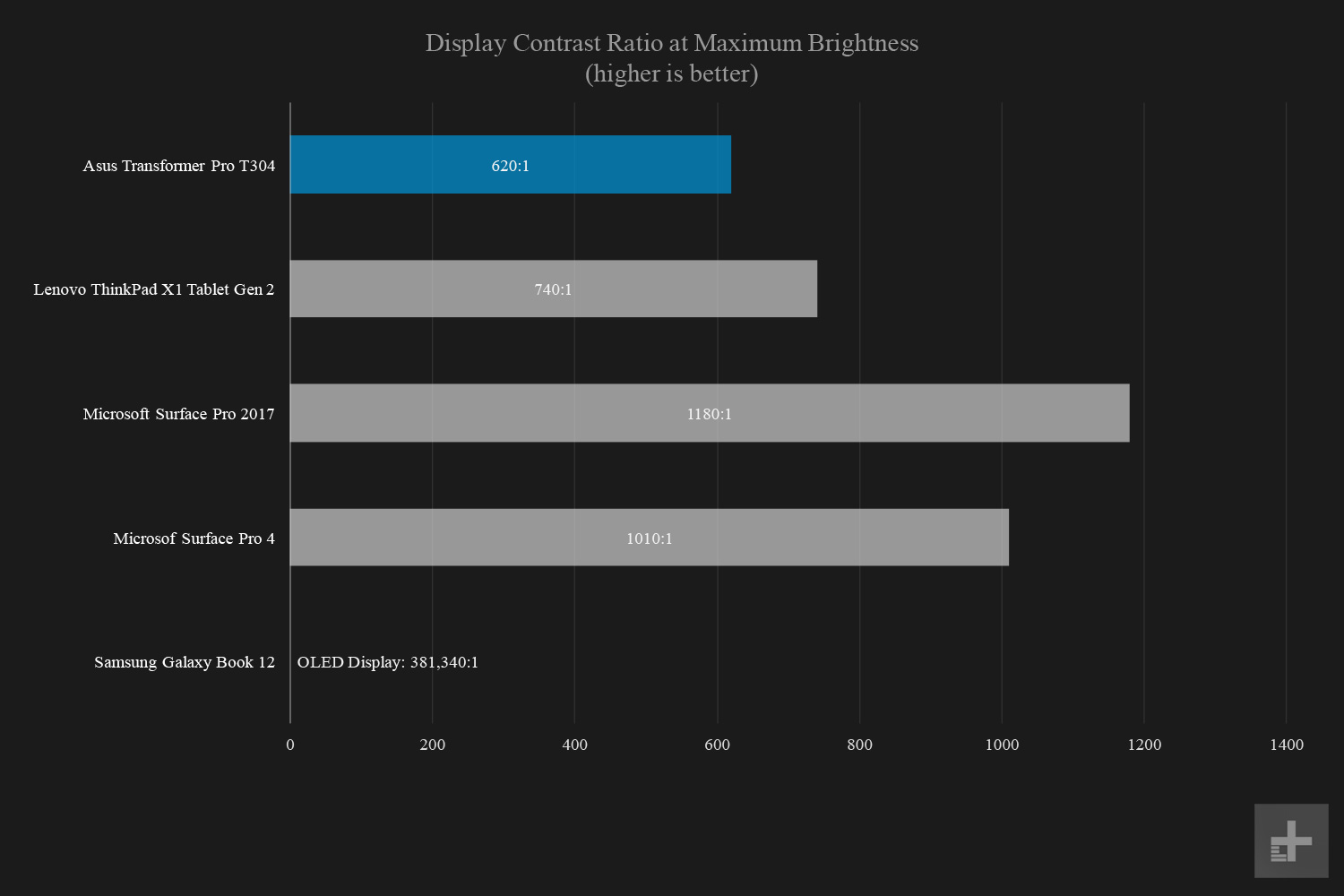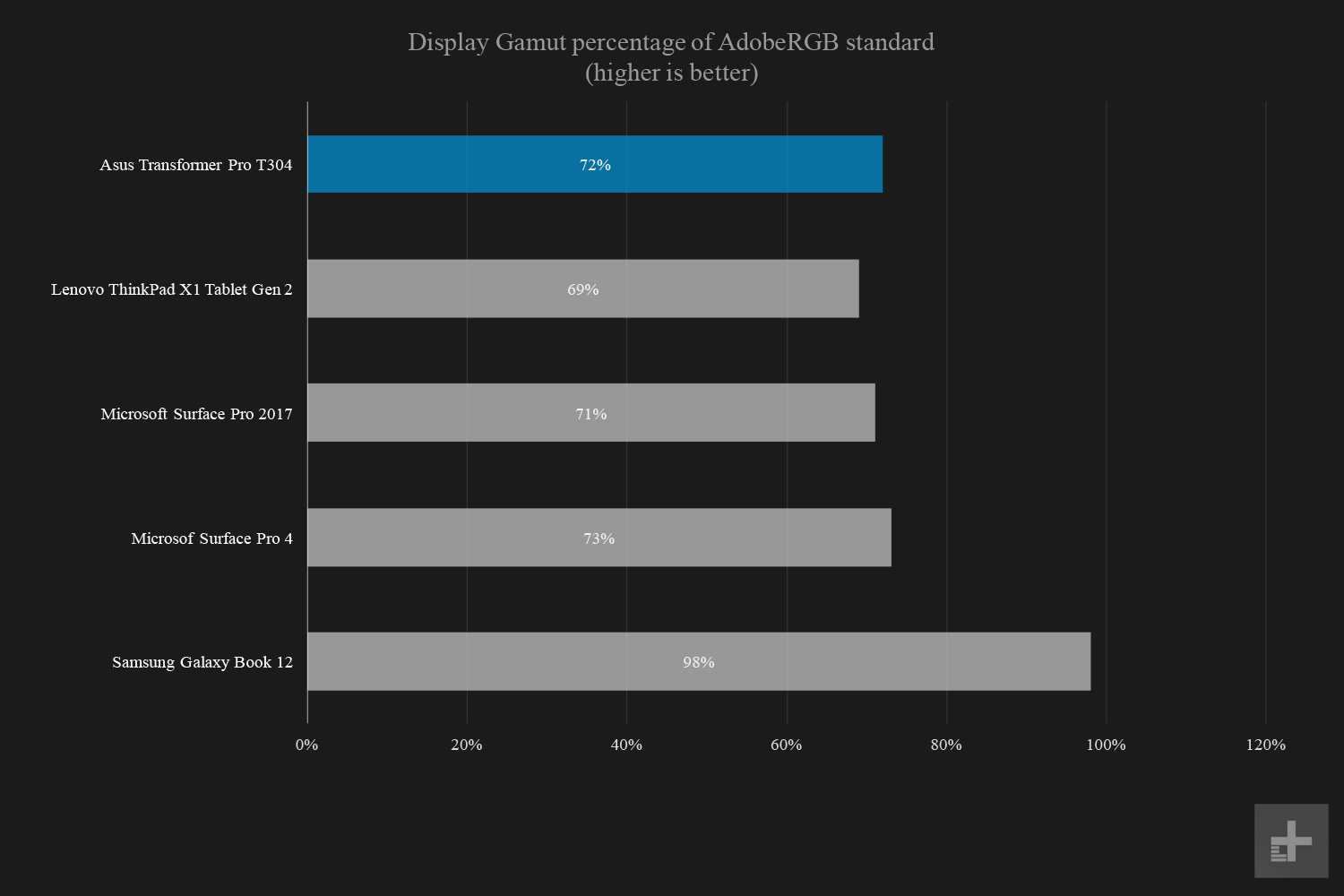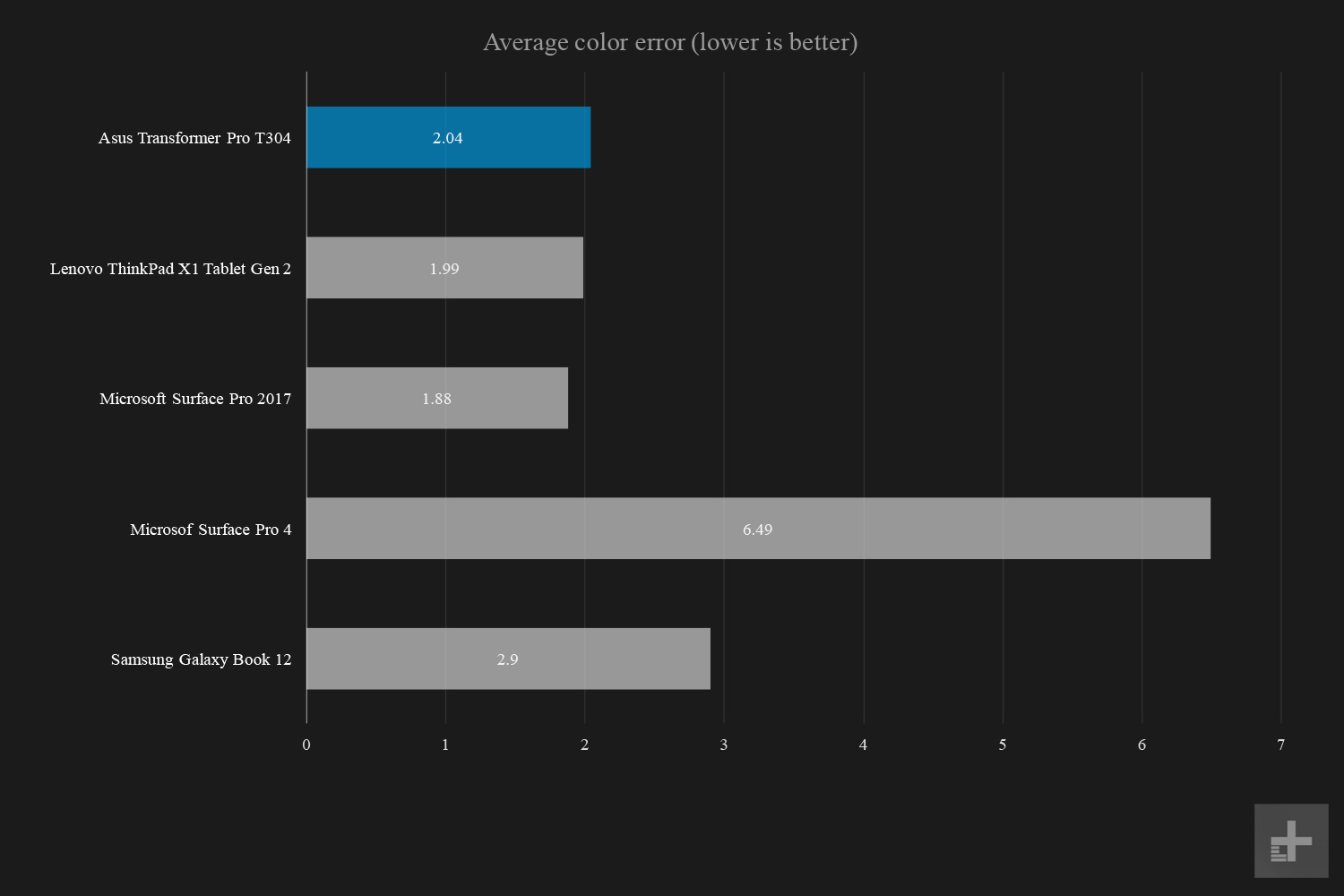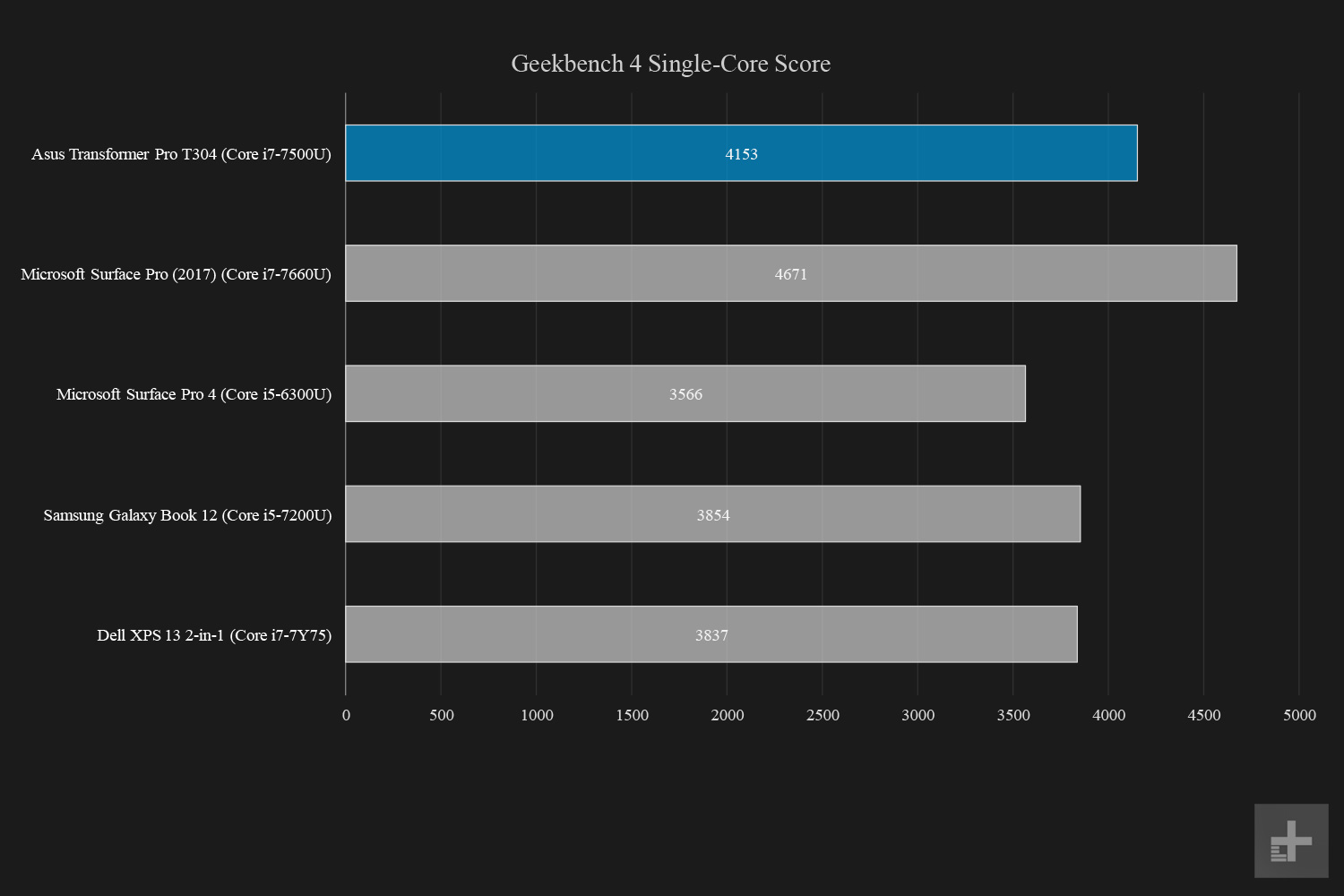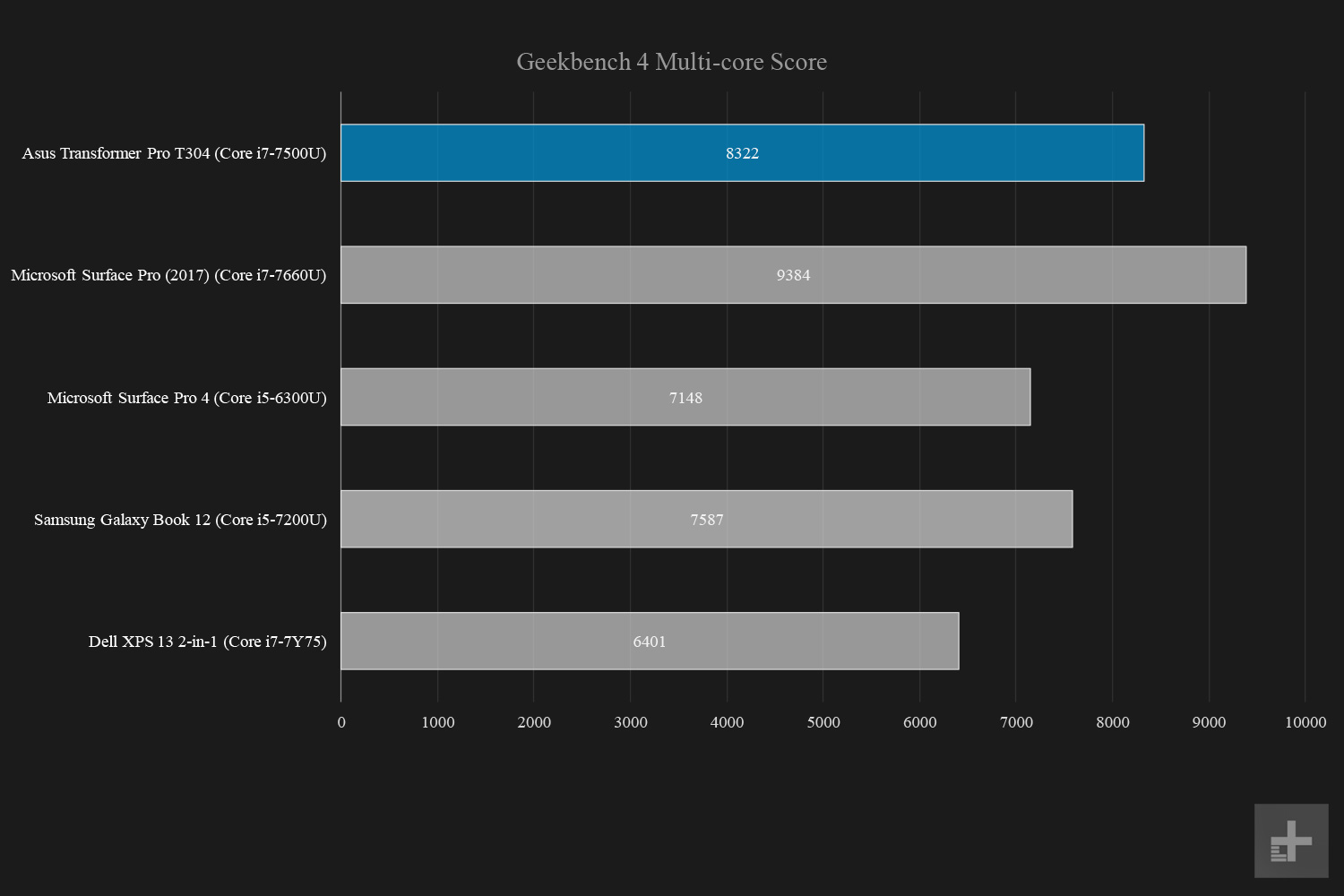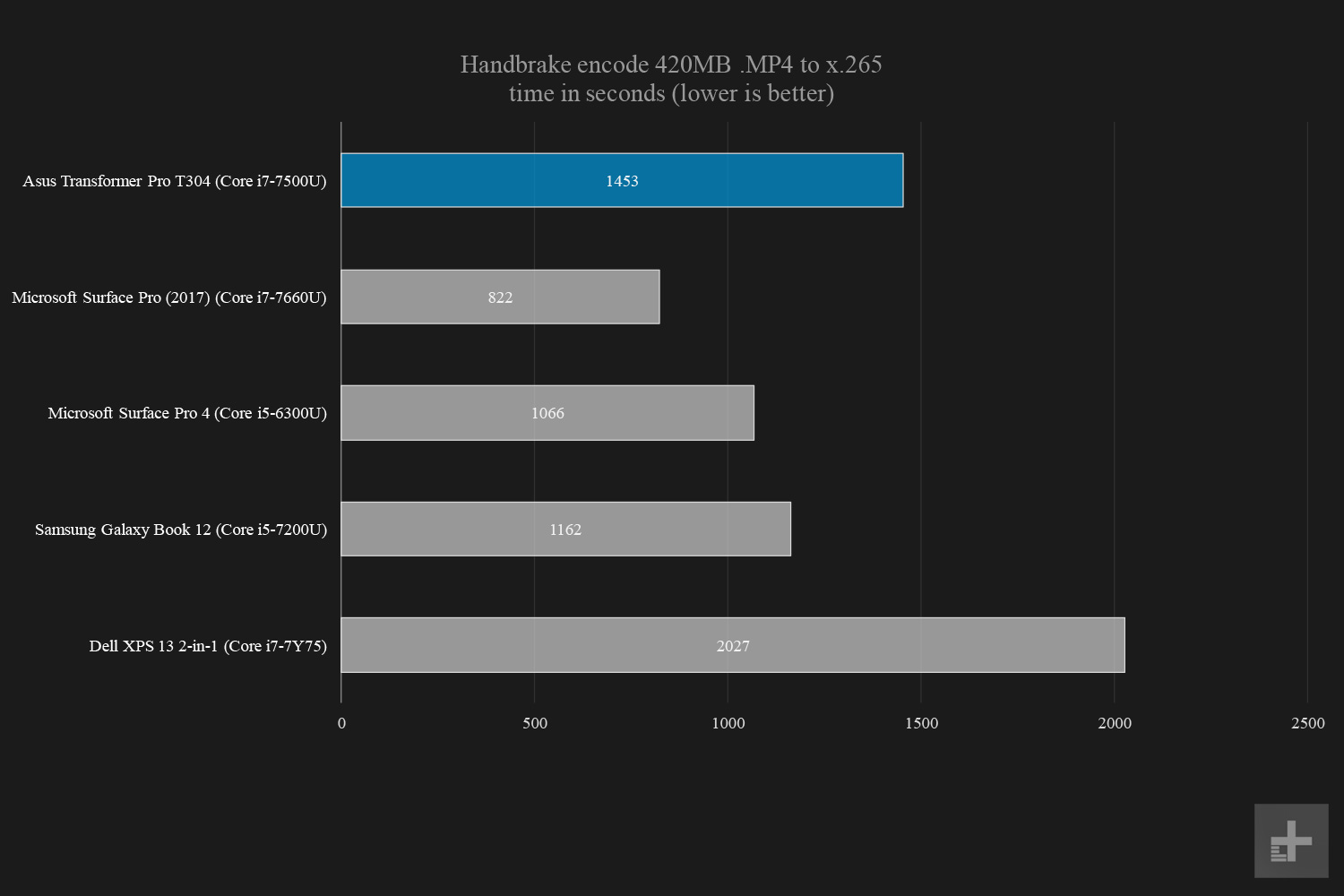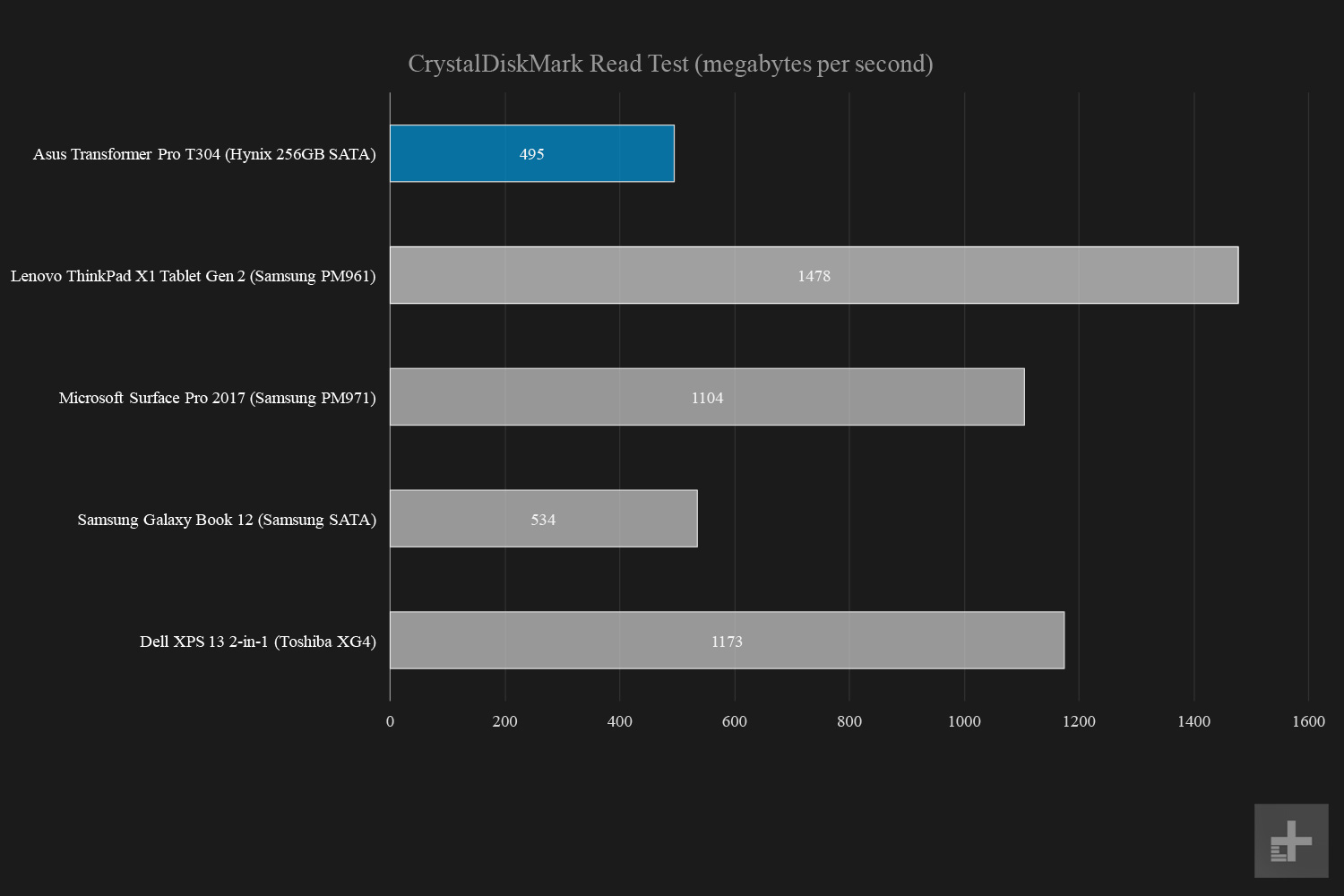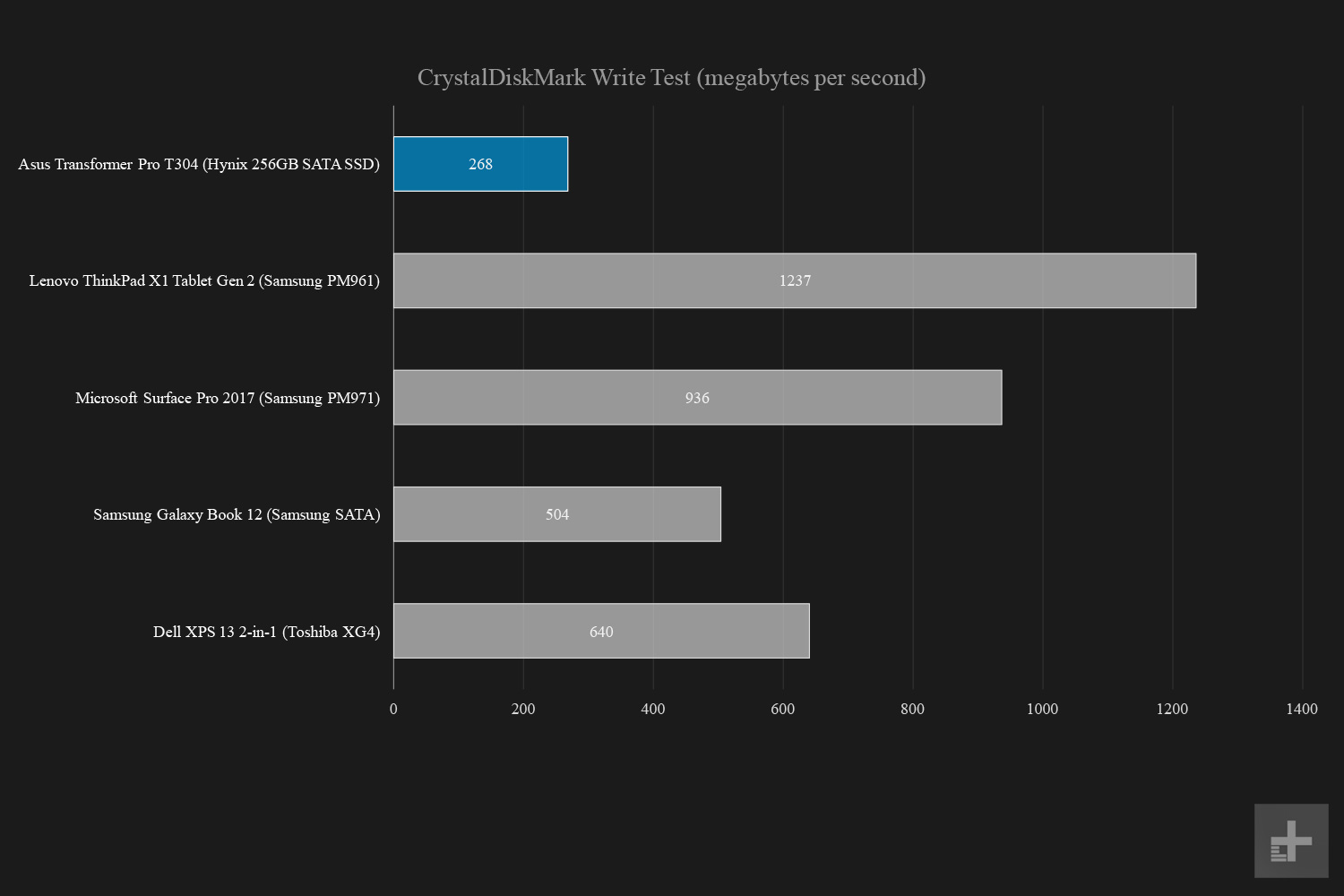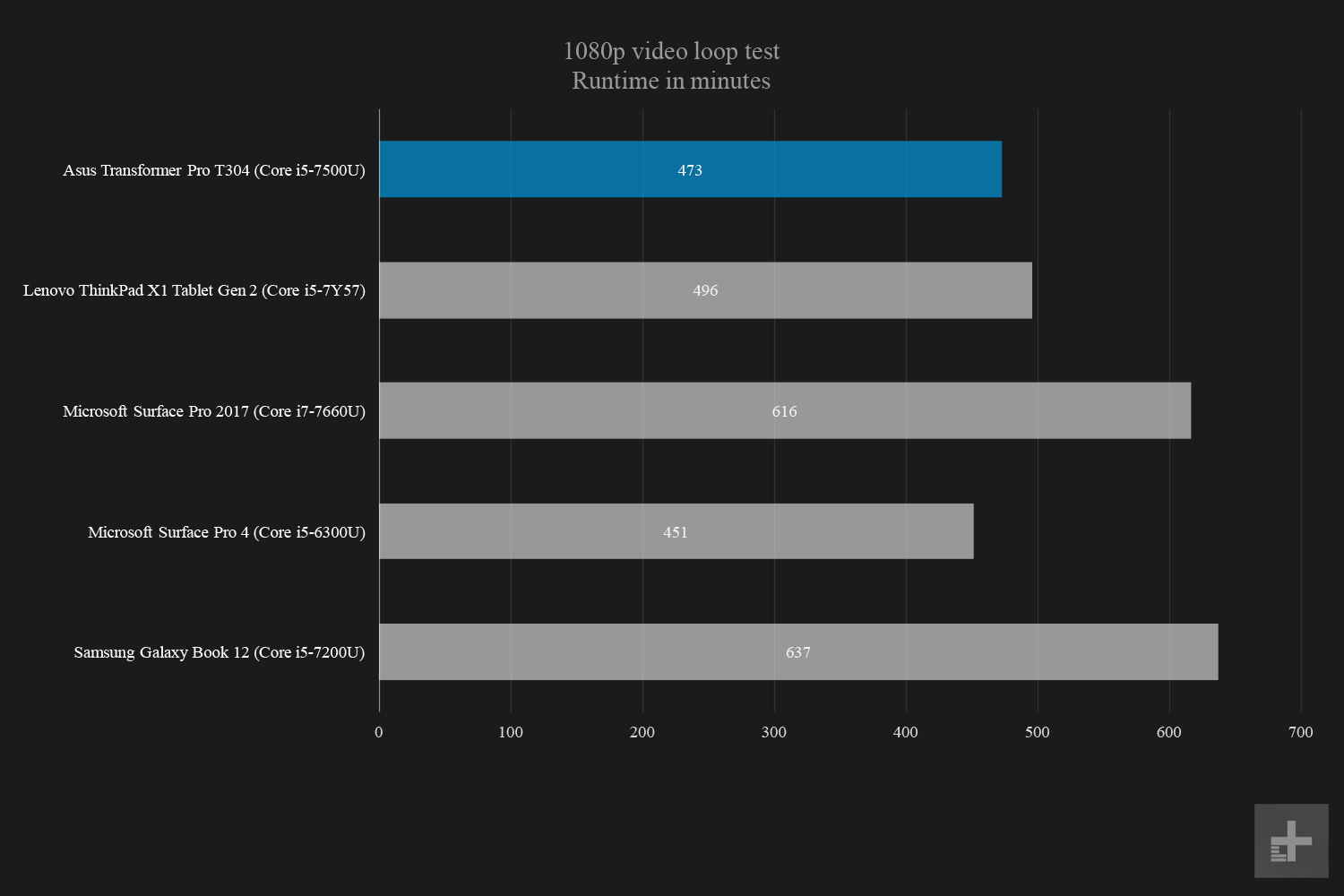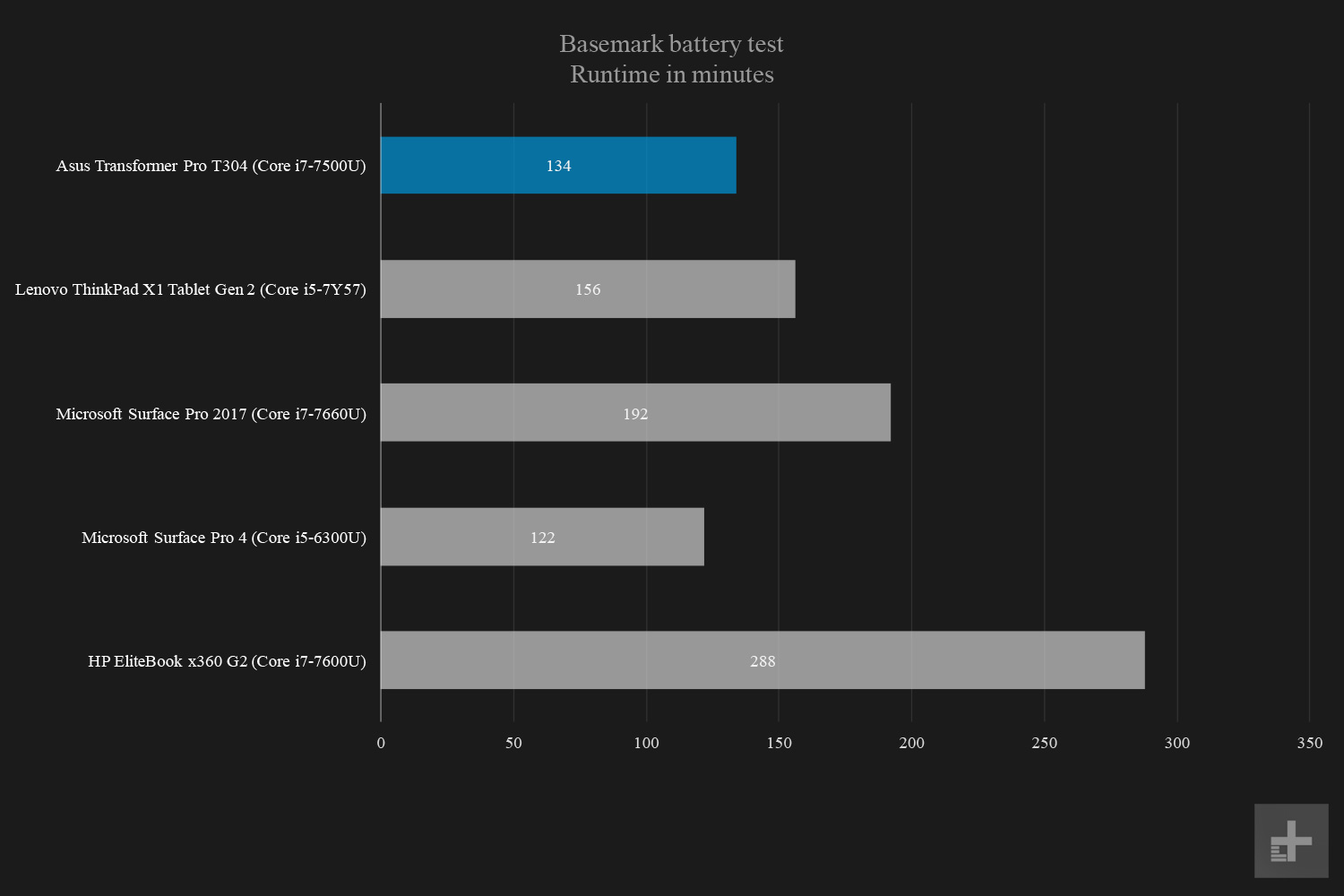“The Asus Transformer Pro T304 uses price and connectivity to bring more value than the Surface Pro.”
- Low price means real value
- Good keyboard and touchpad experience
- Decent performance for productivity work
- Solid build quality for the price
- Unfortunate choice in storage hampers performance
- Battery life could be better
- Display is average at best
Microsoft’s Surface Pro is the most iconic detachable tablet and has maintained a significant lead in the Windows 2-in-1 market in both performance and mindshare. That hasn’t stopped Microsoft’s OEM partners from jumping into the game with their own versions of the most flexible format, with varying success. In our Asus Transformer Pro T304 review, we’re taking a look at a near clone of the Surface Pro that hopes to use a lower price to carve out its own piece of the growing segment.
The main question is, can a machine that looks so much like the Surface Pro — seriously, you’d have a hard time telling them apart from across a room — differentiate itself enough to grab your hard-earned cash? It might if you look at the price. Our review unit offered a seventh-generation Intel Core i7-7500U, 8GB of RAM, and 256GB SATA solid-state drive (SSD) for a cool $1,000. Right now, our review configuration is the only one available at retail, except for a special version at wholesaler Costco with the Core i7-7500U, 16GB of
The closest equivalent Microsoft Surface Pro runs $1,600, and the Asus Transformer Pro T304 includes a keyboard cover and active pen, whereas the Surface Pro does not. Add in the Microsoft Signature Type Cover ($160) and the Surface Pen ($100), and the Surface Pro comes in at $1,860. That’s approaching twice as much as the Asus alternative.
Price is only one consideration, however. We’ve seen many Surface imitators fall short. Does the Asus Transformer Pro T304 bring enough features and performance to turn its low price into real value?
Like the Surface Pro, only different
If you were to set the Surface Pro and the Transformer Pro T304 side by side on a table, the average person would have a hard time telling them apart from across the room. The Transformer Pro T304 uses a similar silver magnesium-aluminum alloy chassis, has an almost identical kickstand, and the Charcoal keyboard cover that shipped with our review unit is the spitting image of Microsoft’s Type Cover.
There are differences, however, when you get the machines in your hands. The Transformer Pro T304 doesn’t have the same “solid chunk of metal” feel about it. It doesn’t feel cheap or poorly made by any mean, but Asus doesn’t match Microsoft’s efforts at exuding elegant quality.
Also, the kickstand might look the same, and it extends out to a full 170-degree angle versus the Surface Pro’s 165 degrees — but it doesn’t feel the same. The action is not as smooth, and indicates a little less engineering prowess.
Even so, the Transformer Pro T304 feels like a quality product. It’s similar in weight at 1.79 pounds, versus around 1.7 pounds for the Surface Pro. It has smooth enough edges that it’s comfortable to hold as a tablet, and its keyboard cover offers the same magnetic auto-off (and auto-on, something the Surface Pro lacks) functionality. There were no creaks or twists to imply the Transformer Pro T304 won’t hold up to long-term use.
In other words, the Transformer Pro T304 is a well-made detachable tablet with all the same strengths and weaknesses of its class. It’s excellent as a tablet, and it can serve as a bona fide laptop as long as you use it on a stable platform. The tablet and keyboard are connected via strong magnets, so you won’t worry about them inadvertently coming apart, though you’ll still sense some instability when you’re using it in your lap.
Input options are diverse and good enough for productive work
Like all detachable tablets, the Asus Transformer Pro T304 has a plethora of input options that match the machine’s diversity. As a tablet, it begs to be used with just touch and a pen, yet there’s no better way to input copious amounts of information than a standard keyboard. The Transformer Pro T304 accommodates these needs quite well.
Asus offers two keyboards for the Transformer Pro T304, a version with an aluminum cover, and the Charcoal colored version that came with our review unit. That version has a soft-touch feel that’s similar to the original Microsoft Type Cover for the Surface Pro 3, and it has the same general bounciness when you type on it. Bounce is a common trait of these kinds of keyboard covers, so it’s not a knock against the Transformer Pro T304 specifically.
The generally snappy response should provide a comfortable experience for most touch typists.
The keys offer a solid 1.4mm of travel – almost as much as an average laptop — and a generally snappy response that should provide a comfortable experience for most touch typists. In addition, the keyboard layout is familiar, with all the right-sized keys in all the right places. It’s attached using magnets and a pogo pin connector, so it offers the typical flat and inclined typing positions. Best of all, it stays connected just as it should.
The touchpad is also good enough, and it’s a full 17 percent larger than the Microsoft equivalent. Its glass coating is smooth and comfortable for fast and efficient cursor control, and the buttons are responsive without being overly loud. Because it’s a Microsoft Precision touchpad, all the built-in gestures are available, and they’re just as precise as the name implies.
Asus includes its active pen with the Transformer Pro T304. This is one area where the Asus machine lags the Surface Pro, with the former offering 1,024 levels of pressure sensitivity compared to the latter’s 4,096 levels. And the Asus pen doesn’t respond as quickly as Microsoft’s latest, with just a hint of lag when you’re writing quickly across the touchscreen display. That leaves the Transformer Pro T304 near the rest of the detachable pack.
Finally, the Transformer’s 10-point multitouch display responds quickly and accurately, which is the norm with Windows 10 touchscreen machines today. It provides an excellent experience whether in tablet or laptop mode.
Windows Hello support is included, but Asus went with a fingerprint scanner rather than an infrared camera for facial recognition. The Transformer Pro T304 takes a unique approach, however, with the fingerprint scanner embedded within the power button for one-touch wake and login. It worked well, with fingerprints recognized consistently and quickly.
That’s a lot of ports (for a tablet)
Asus packed real connectivity into the Transformer Pro T304, paying attention both to the past and to the future. On the left side of the tablet you’ll find a microSD card reader beneath the volume buttons, which is a little more convenient than sticking it behind the keyboard as some vendors have done. On the right side, you’ll find a USB 3.1 Type-A port, a full-sized HDMI connection, and a USB 3.1 Type-C port. Unfortunately, the latter is not equipped with Thunderbolt 3.
You power the Transformer Pro T304 with a standard A/C adapter, which is unfortunate given the presence of the USB Type-C port. We tried a couple of USB Type-C power supplies from other manufacturers, and they did not charge the machine.
A high-resolution display that disappoints
Asus slipped a slightly larger 12.6-inch display into the Transformer Pro T304, up a bit from the more common 12.3-inch screens you’ll find in some other detachable tablets including the Surface Pro. The resolution is a bit lower, at 2,160 x 1,440 or 206 PPI. That’s below the 267 PPI provided by the Surface Pro’s 2,736 x 1,824 resolution. In a nod to productivity, Asus chose the 3:2 aspect ratio that’s great for documents and spreadsheets, but does cause some letterboxing with video.
When measured by our trusty colorimeter, the Transformer Pro T304’s display was of average to below-average quality. In terms of color gamut, the screen came in at 72 percent of AdobeRGB and 93 percent of sRGB. Color accuracy was 2.04, a decent score compared to the optimal of 1.0 or less. And a perfect gamma of 2.2 meant that video scenes won’t be too light or to dark. All of those were competitive with our comparison machines such as the Surface Pro and the Lenovo ThinkPad X1 Tablet Gen 2.
That’s the good news. Contrast,on the other hand, was significantly lower than average for the class at 620:1 at full brightness. That’s well below the Surface Pro’s excellent 1180:1 score and the Samsung Galaxy Book’s ultra-high contrast OLED display. Brightness was also low at 251 nits, which was only partially mitigated by the anti-glare screen. Most competing detachable tablets offer better screens, at least in purely objective terms.
Most competing detachable tablets offer better screens, at least in purely objective terms.
In use, the Transformer Pro T304’s display was good enough, with decent colors and acceptable video. And if you don’t like how things look, you can tweak the display using the Asus Splendid Technology utility, which lets you change color profiles between Normal, Eye Care (good for reducing blue light for better sleep), Vivid, and Manual modes. The latter could be particularly helpful for achieving a display that looks good to you personally.
In addition, Asus includes its Tru2Life video enhancement technology, which is supposed to improve clarity, color, and contrast when watching videos. Asus promises a more colorful, vivid, and sharper experience with up to 200 percent more contrast. We tried out some videos and couldn’t tell a significant difference, but this is subjective, and your experience might vary.
Overall, the Transformer Pro T304 has a display that’s pleasant to use but won’t knock your socks off when working, viewing photos, or watching video. It’s fine, but you’re not getting the kind of experience that you’ll get from the superior displays Microsoft uses in its Surface line.
Audio that promises a lot and delivers some of it
The Transformer Pro T304 offers dual speakers that flank the display on each side of the tablet towards the bottom. They fire to the side, which is better than firing backwards, but not as optimal as some tablets with front-firing speakers. Asus promises 96 decibels of sound, a “Smart Amplifier” provided by Texas Instruments aimed at maximizing volume without damaging the speakers, and Harman Kardon certification — all of which, on paper, should provide a superior audio experience.
In our testing, we found that volume could indeed be cranked up to decent levels without distortion and, overall, the sound quality was better than the typical tablet. Using the Asus AudioWizard presets was most effective with movies, where some nice simulated surround sound enhanced the experience. Music was less pleasant, however, with nice highs and a solid midrange but almost non-existent bass.
The bottom line is that you’ll want to keep a set of
Good but not great performance
Our review unit shipped with a Core i7-7500U, the only processor currently available for the Transformer Pro T304. As such, it promises good performance for its class, and avoids the pitfalls of power-sipping processors that were once the norm for these kinds of machines.
In the Geekbench 4 synthetic benchmark, the Transformer Pro performed right in line with its CPU, scoring 4,153 in the single-core test and 8,322 in the multi-core test. The Surface Pro’s higher-end Core i7-7660U was the leader here, with the competing Core i5 coming in next, and the low-power Core i7-7Y75 in the Dell XPS 13 2-in-1 coming in dead last.
The Transformer Pro T304 did stumble a bit on our real-world Handbrake test, which converts a 420GB video file to H.265 format. Here, the machine took 1,453 seconds to complete the conversion, which is significantly slower than expected and second only to the low-power Core i7 variant. The Handbrake test is more susceptible to heat and CPU throttling than Geekbench, and we can only guess that Asus dialed things back on the Transformer Pro T304 to keep things cool. Interestingly, we noticed this same issue with the Asus Zenbook 3, another thin notebook.
In terms of heat, the machine never got more than just warm anywhere on its surface, and fan noise was reasonable. That attests to the fact that the CPU speed might be scaled back during the longer Handbrake test.
Overall, performance is great for general productivity work, web surfing, and content consumption for which tablets are typically used. The Transformer Pro T304 might not be the machine you want to purchase, however, if you need to do more strenuous tasks like video encoding that might cause the machine to throttle down. That’s no real surprise, but it does show there’s a big gap between the T304 and the top-end Surface Pro, which aced our CPU tests.
Storage suffers from an unfortunate cost-cutting measure
If there’s one area where Asus dialed back the specifications and hampered performance, it’s in its choice of a SATA SSD rather than the increasingly common PCIe variants. SATA drives are significantly slower out of the box, and it’s disappointing to see one used here.
As expected, the Transformer Pro T304 suffered from some seriously below-average storage performance. In the CrystalDiskMark benchmark, the machine scored a poor 495 megabytes per second in the read test, and an even worse 268 MB/s in the write test. That’s destroyed by the very fast Samsung PM961 PCIe SSD in the ThinkPad X1 Tablet Gen 2, as well as the slower but still faster Toshiba XG4 in the Dell XPS 13 2-in-1.
For the most part, users won’t notice this kind of speed differential. Compared to much slower spinning hard disk drives, these are still fast scores. However, if a user needs to access large database files, then the Transformer Pro T304 won’t be a good choice.
In short, the Transformer Pro T304 is a good machine for general productivity work, but anyone who needs maximum oomph should look elsewhere.
Best for casual gaming, or not at all
Detachable tablets running Windows 10 don’t have a reputation for being great portable gaming machines. The reason is simple — most use the integrated Intel HD graphics that come with their CPUs, given the space and thermal management needs of discrete GPUs. The Transformer Pro T304 is no different, being equipped with Intel HD 620.

As expected, the Transformer Pro T304 scored right in line with other systems using a similar Intel HD integrated GPU. In 3DMark Fire Strike, the machine hit a 768, which is no better or worse than our other similarly-equipped comparison systems. The Surface Pro we tested did score much higher thanks to its Intel Iris Plus 640 graphics, as did the much larger HP Spectre x360 15, with its Nvidia GeForce 940MX discrete GPU.
To confirm the obvious, we ran Civilization VI in medium settings at Full HD resolution, and sat back to play a slide show at an average 11 frames per second (FPS). That’s par for the course for Intel HD 620 machines, and even Intel’s Iris Pro 640 could only muster 16 FPS.
You might be able to use the Transformer Pro T304 with some older games, or newer titles with resolution and graphics scaled way, way down. Or, you could just realize that gaming isn’t what this machine is made for and settle for some casual Windows 10 games instead.
Battery life is a real weakness
The Transformer Pro T304 packs in a relatively small 39 watt-hour battery and sports a relatively large and high-resolution display. It also utilizes a fast, full-speed Core i5 processor. Those specifications don’t promise the longest battery life.
Unfortunately, things fell right in line with our low expectations. On our most intensive Basemark battery benchmark, which runs a machine through a series of processor- and GPU-intensive web pages, the Transformer Pro T304 lasted for an underwhelming two hours and 14 minutes. That’s worse than the ThinkPad X1 Tablet Gen 2, and just barely better than the notoriously short-lived Surface Pro 4. The new Surface Pro lasted three hours and 12 minutes, almost an hour longer than the Asus.
On our least battery-intensive video looping test, the Transformer Pro T304 lasted a short seven hours and 53 minutes, again behind the Lenovo and barely ahead of the Surface Pro 4. The new Surface Pro killed the Asus here, coming in at a much stronger 10 hours and 16 minutes.
Battery life fell right in line with our low expectations, and won’t last you a full workday.
Finally, we also ran the Transformer Pro T304 through our iMacros test, which loops through a series of popular web sites. On this test, the machine once again gave a poor showing, coming in at four hours and 44 minutes. The ThinkPad X1 Tablet Gen 2 lasted five hours and 20 minutes in this test, and the Surface Pro five hours and 38 minutes. The Transformer Pro T304’s combination of small battery, high-resolution display, and fast processor means less time away from a charger.
Overall, the Transformer Pro T304 is a thin machine at 8.85mm thick, and it’s light at 1.79 pounds without the keyboard attached. It’s therefore a breeze to carry around with you. However, you won’t be able to work a full day without plugging in, and that significantly reduces the machine’s portability.
Warranty information
Asus offers a one-year warranty on the Transformer Pro T304. However, it also tosses in a year’s accidental damage protection, which covers spill and drop damage that results in the machine being unable to perform its intended functions. That’s way more than most competitors will give you.
Our Take
The Asus Transformer Pro T304 is a solidly built detachable tablet with a decent keyboard cover and pen. It performs well enough and offers superior connectivity. However, its battery life is subpar, and its display is average to below-average for its class.
Where it wins is price. At $1,000 as configured, including the keyboard cover and pen for complete productivity, it’s a solid value in this class of machines, while meeting the needs of the vast majority of people who will purchase a detachable tablet.
Is there a better alternative?
There’s a reason why this review spent so much time comparing the Asus Transformer Pro T304 to Microsoft’s Surface Pro. It’s obvious that Asus wants you to see the similarities between the two machines, and then opt for the Transformer Pro T304 because of its significantly lower price.
The Transformer Pro T304 is slower, has less battery life, and isn’t quite as robust as the Surface Pro. But at close to half the price, it offers some serious value that makes up for its deficiencies. In addition, the Transformer Pro T304 simply outclasses the Surface Pro when it comes to connectivity, offering a solid mix of legacy ports to go with a futuristic USB Type-C connector. We’d take the Surface Pro, but it simply isn’t affordable for everyone.
If you’re not sold on a detachable tablet, then there are other solid 2-in-1s that you can consider. The Lenovo Yoga 720 13-inch is a convertible 2-in-1 that’s in the same ballpark in terms of price, and the HP Spectre 13 2-in-1 costs a bit more, but also offers superior performance and battery life, and in fact is one of our overall favorite 2-in-1 machines.
How long will it last?
The Transformer Pro T304 is built well enough to last, is equipped with a fast processor that should keep up with connectivity tasks, and its equipped with a great selection of ports that should keep it connected well into the future. However, its storage speeds are slow enough that they might not keep up as well as the rest of the machine.
Should you buy it?
Only if you’re short on cash and can’t afford a Microsoft Surface Pro, and you don’t mind the small battery. Asus’ alternative is far more affordable, but make sure you don’t need what you’re giving up.





